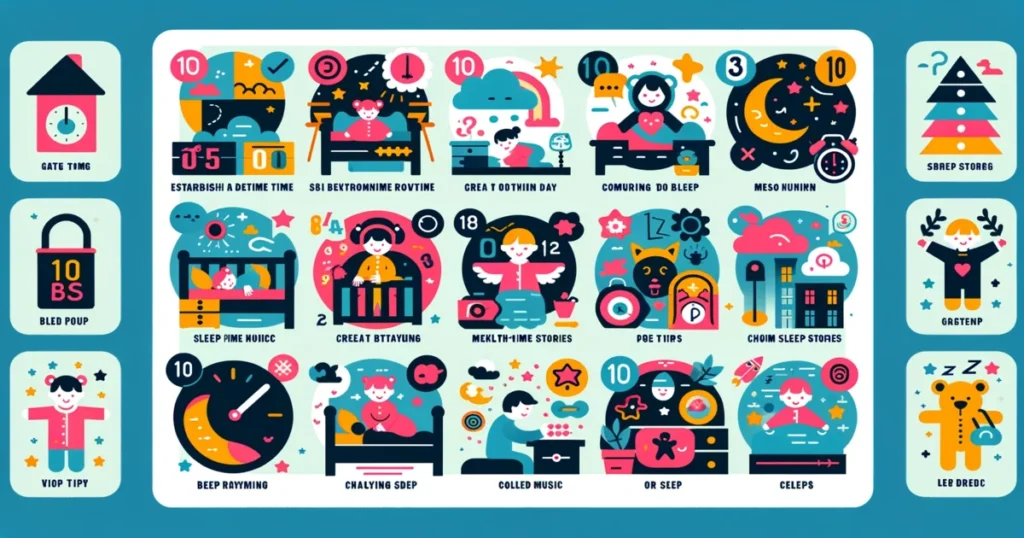Introduction of How to get Toddler to Stay in Bed:
Are you finding it challenging to keep your toddler in bed at night? We get it – bedtime can be a real adventure! But fear not, because we’re here to help. In this guide, we’ll share some tried-and-true tips on how to get toddler to stay in bed, making bedtime smoother for everyone. So, let’s embark on this bedtime journey together and make evenings more peaceful and cozy for your family!

Create a Cozy Bedtime Routine:
To understand how to get a toddler to stay in bed, it’s essential to establish a calming bedtime routine. Start with activities like reading a bedtime story, gentle snuggles, or singing a lullaby. This routine signals that it’s time to wind down and prepares your child for sleep.
Tip: Choose activities that your toddler enjoys and look forward to each night. Consistency is key in making them feel safe and secure. Additionally, setting up a bedtime routine can be comforting.
Set a Regular Bedtime:
Consistency is crucial when it comes to sleep. Getting a toddler to stay in bed is easier when you set a specific bedtime and stick to it. This helps regulate their internal body clock, making it easier for them to fall asleep and stay in bed.
Tip: Ensure that the bedtime you choose allows for the recommended hours of sleep for your toddler’s age. Having a regular bedtime is a cornerstone of healthy sleep habits.
Create a Comfortable Sleep Environment:
Make your toddler’s bedroom a cozy and inviting place to sleep. Ensure the room is dark, quiet, and at a comfortable temperature. Use soft, breathable bedding, and consider a nightlight if they’re afraid of the dark.
Tip: A favorite stuffed animal or blanket can provide comfort and security. A comfortable sleep environment is conducive to getting your toddler to stay in bed.
Limit Screen Time Before Bed:
Avoid exposing your toddler to screens (TV, tablets, phones) at least an hour before bedtime. The blue light emitted from screens can interfere with their ability to fall asleep.
Tip: Use this screen-free time for quiet activities like coloring or puzzles. Reducing screen time before bed is important for getting toddlers to stay in bed.
Offer a Bedtime Snack:
A light, healthy snack before bedtime can help stave off hunger and prevent middle-of-the-night wake-ups. Opt for something like a small serving of yogurt or a banana.
Tip: Avoid sugary or heavy foods close to bedtime. Providing a bedtime snack can be a useful strategy for keeping your toddler in bed.
Use Positive Reinforcement for How to get Toddler to Stay in Bed:
Encourage your toddler to stay in bed by offering praise and positive reinforcement when they do. Acknowledge their efforts in staying in bed all night, and let them know how proud you are.
Tip: Consider a sticker chart where they can earn rewards for staying in bed. Positive reinforcement is an effective way to motivate toddlers to stay in bed.
Comfort Them During Night Wakings:
If your toddler wakes up during the night, comfort them without taking them out of bed. A soothing pat on the back or a comforting word can reassure them and encourage them to go back to sleep.
Tip: Be patient and consistent in your approach. Comforting them during night wakings can help them learn to stay in bed.
Talk About Their Fears:
If your toddler is scared of monsters, the dark, or other bedtime fears, talk to them about it. Acknowledge their feelings and provide comfort by checking for monsters or using a nightlight.
Tip: Show empathy and validate their emotions. Addressing your toddler’s fears is essential for them to feel secure in bed.
Be Consistent with Boundaries:
Toddlers thrive on consistency. If they keep getting out of bed, calmly and firmly guide them back to bed each time. Avoid engaging in play or negotiation.
Tip: It may take a few nights of consistency for them to adjust. Being consistent with bedtime boundaries is crucial.
Consider a Bedtime Alarm Clock:
Some toddler alarm clocks change color when it’s time to wake up, teaching your child when it’s appropriate to get out of bed. This visual cue can be helpful.
Tip: Introduce the alarm clock gradually, explaining its purpose. A bedtime alarm clock can reinforce the idea of staying in bed until it’s time to wake up.




